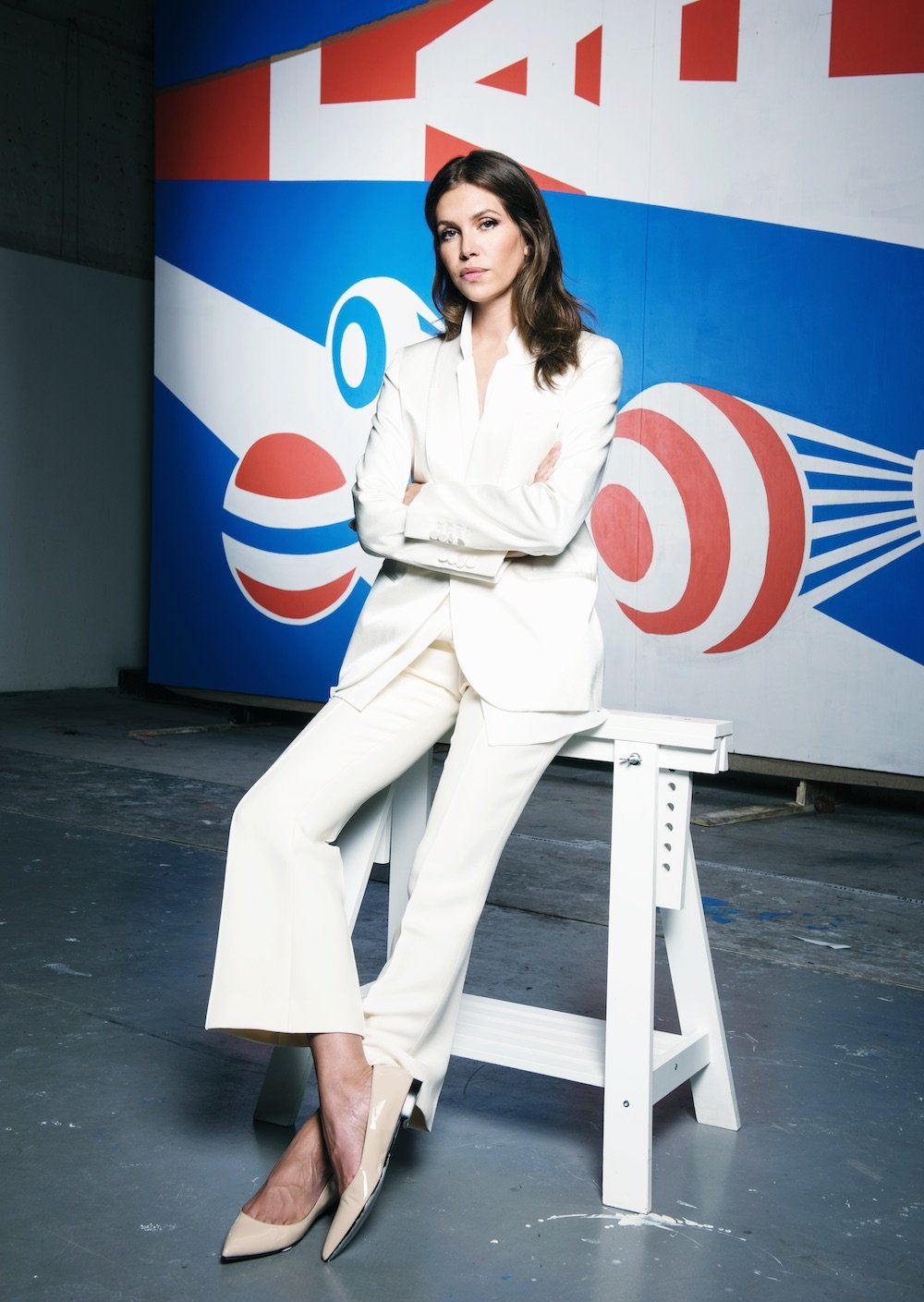
Russian collector Dasha Zhukova, who founded Moscow’s Garage Museum of Contemporary Art, has launched a new real-estate venture with the aim of bringing residential apartments, art studios, and exhibition spaces together under one roof.
Ray, as Zhukova’s new business is called, already has two major developments underway, in Manhattan and Philadelphia. Its website describes them as “vertical villages” and notes that prices will be “accessible.”
“Ray’s mission is to provide more equitable access to the built spaces of the future,” the company says.
Mexico City-based architect Frida Escobedo, who in 2018 became the youngest architect ever commissioned to build London’s Serpentine Pavilion, will lead the design of the 21-story development Ray Harlem.
The building’s first four floors will serve as the new home of Harlem’s historic National Black Theatre, founded in 1968 by Barbara Ann Teer, and will include spaces for performance, events, and retail. The rest of the building will feature 222 apartments, artist studios, co-working spaces, as well as communal kitchens and libraries. Construction on Ray Harlem is expected to start this month, with a planned completion date of 2024.
A rendering of Ray Harlem. Courtesy of Ray.
Ray Fishtown, a 110-unit building in Philadelphia designed by the architecture firm Leong Leong, is under construction now and boasts a similar slate of amenities, including a half-dozen street-level artist studios. New York artist Rashid Johnson will create a living greenhouse in the building’s lobby while Philadelphia-based artist Michelle Lopez will add a text-based intervention on the split brick facade. Lopez will also work out of a studio at the development and become its inaugural artist in residence when it open in 2022.
Designer Suzanne Demisch, who’s been recruited by Ray to work on the upcoming projects, tells Artnet News that the firm will look to work with “emerging and established artists, designers, and architects” who are “local” and “forward-thinking.”
Demisch, who’s worked with Zhukova on various projects for a decade, says the philanthropist first articulated her vision for Ray five or six years ago. “We discussed the future of living and architectural and design gestures—the daily touchpoints,” the designer explains. “Two years later, Dasha developed the concept further to thoughtfully designed residential spaces at the intersection of art and culture, community, and accessible pricing. She asked me if I would join her in defying the traditional boundaries of architecture and design in the residential field and [creating] more equitable access to the built spaces of the future.”
A rendering of Ray Fishtown. Courtesy of Ray.
Zhukova seems to have taken some inspiration for Ray from the Garage Museum building, which was designed by Rem Koolhaas and has proved to be as big a draw as the programming inside, Zhukova told the Wall Street Journal last week.
“Even if [visitors] had seen all the shows that we had on, they would just stay and hang out in our lobby,” she said. “They would hang out in our cafe for hours on end—just come back day after day because they wanted to be in that environment.”
Each of Ray’s developments will offer its future inhabitants a grip of perks calibrated to the creative culture of their respective cities and neighborhoods, including workshops with local artists and live events sponsored by nearby arts organizations.
Zhukova, who largely financed the developments, according to the Journal, plans in the future to “expand to technology and brands related to the built environment.”